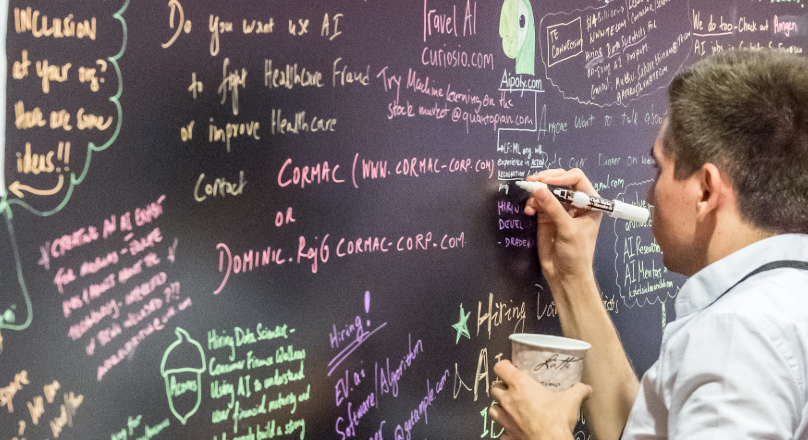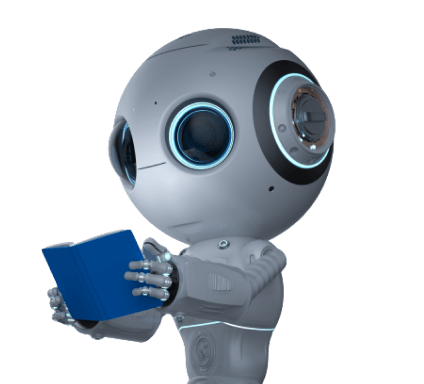Results for ""
The use of technology in education is evolving and becoming more widespread. One of the most notable technological practices in education is AI (artificial intelligence).
Aside from handling and automating tasks like grading, AI can also help students with learning. The use of AI for improving students' outcomes has already come across positive reactions from teachers, students, as well as parents.
Let's see how AI can simplify and personalize students' learning processes.
Access Learning at Any Time
Young people are always rushing, and their time tends to be limited due to studying, family time, social life, hobbies, and extracurricular activities. However, they do always have their smartphones or tablets on them. That's why AI perfectly adapts to their lifestyle. For example, Eupheus is a learning platform that provides curriculum, ebooks, practice materials, assessments, tools, and more for schools. What this means for students is that they can access the learning material on their laptops, tablets, and mobile devices.
AI-based applications can be accessed at any time and from anywhere. Whether the students have an extra 15 minutes before they go out with their friends, or they are waiting for the bus, they can use their app to revise the material.
Also, students can get real-time feedback. One of the AI-powered platforms that provide that is Netex Learning. This company has a plethora of AI-based features, and real-time feedback is one of them.
Personalized Tutoring
Students won't have to worry about being the worst in the class or asking questions in front of the whole class. Personalized tutoring powered by AI can help them with challenging lessons.
Children have different strengths skill-wise, and consequently, they need additional help with several lessons. That's why personalized tutoring is so beneficial. It adapts to students' needs. Consider Zoomi, a system that uses a branch of AI, Natural Language Processing (NLP), to review the course material and remove any content that won't have a positive impact on the learning process. Their algorithms can also find complimentary content and fit that content within the context of a specific lesson where a student is struggling.
AI-powered tutoring can offer learning materials based on students' weaknesses. For example, the app can analyze a student's test and provide additional tasks and material to practice their weakest spots. Thinkster is an excellent example of this. This AI-based math learning program provides students with a personalized 1-on-1 session with math tutors and uses AI to analyze students' performance. Coursera is another AI-based platform that examines students' answers and delivers data to teachers. Based on that, teachers and tutors can prepare new learning materials for students to target their weaknesses.
Suitable Tutors
Teachers' capabilities to present material influences students' interest in that subject. A student can have a teacher or tutor whose teaching style doesn't suit him, so his achievements will suffer.
Therefore, if a student isn't good at math, for example, that doesn't necessarily mean that they don't have relevant skills to ace that subject. It can mean that the teacher didn't find a way to interest them in learning math.
The AI-enabled educational platform can solve that issue. It can provide students with appropriate tutors, and the tutors/teachers can be picked based on their teaching experience and soft skills.
There are also AI solutions that can help teachers improve their teaching techniques and make learning more entertaining for students. Third Space Learning, an online education platform that provides one-to-one math tutoring, has teamed up with the University of College London and is leveraging AI algorithms to help teachers improve their performance. For example, the system will send a notification to the teacher if they speak too slow or too fast. The real-time feedback that tutors receive helps them present the material based on individual student's needs.
Engaged Learning
Dull lessons can be substituted with personalized and interactive exercises and materials. AI can be used to develop engaging learning experiences through gamified learning, project-based learning, etc. For example, DreamBox is an AI solution that offers students personalized math lessons. The platform provides educators with tools to motivate and engage students, whether they are learning remotely or in the classroom. Achieve3000 is another platform that aims to help teachers present lessons in an engaging manner. With differentiated content, students are more interested in learning. When learning content is engaging and personalized, students can get their creative juices flowing and show more individuality. Anthony Harrison, an AI developer and contributor writer to BestEssays Education and Supreme Dissertation writing services, explained why AI is the perfect solution for making learning more engaging. "Personalized lessons and gamified learning can ensure that students are receiving the type of learning material that can retain their focus. The need for AI in education will rise as student's attention span is lowering due to their constant consumption of interactive content," said Anthony.
Overcoming Language Barriers
Global classrooms can connect and collaborate with the help of AI. Not only can this help students learn, but it can also influence their cultural and social growth.
Whether students speak different languages or have a hearing impairment, they can use platforms such as Presentation Translator to overcome those barriers. Presentation Translator is a PowerPoint plug-in that creates real-time subtitles. Also, thanks to AI Speech Recognition students, can listen to lectures or read learning material in their native language.
Students from low economic areas who don't have access to quality education can get an opportunity to learn no matter where they are in the world. AI can make learning available to everyone.
This also includes students with health issues who may not be able to attend school regularly. Their learning won't have to suffer as they can receive personalized learning material from the best tutors.
Final Thoughts
AI solutions should be seen as a technological gift to education. Instead of fearing a sci-fi future where AI-powered robots take over our jobs, we should accept that technology has become our reality and that we should make the most of it.
Students can benefit from AI as their learning can be personalized. With the knowledge that students' learning needs differ and with the help of AI solutions, we can create an engaging and customized learning environment for students that will boost their achievements.






